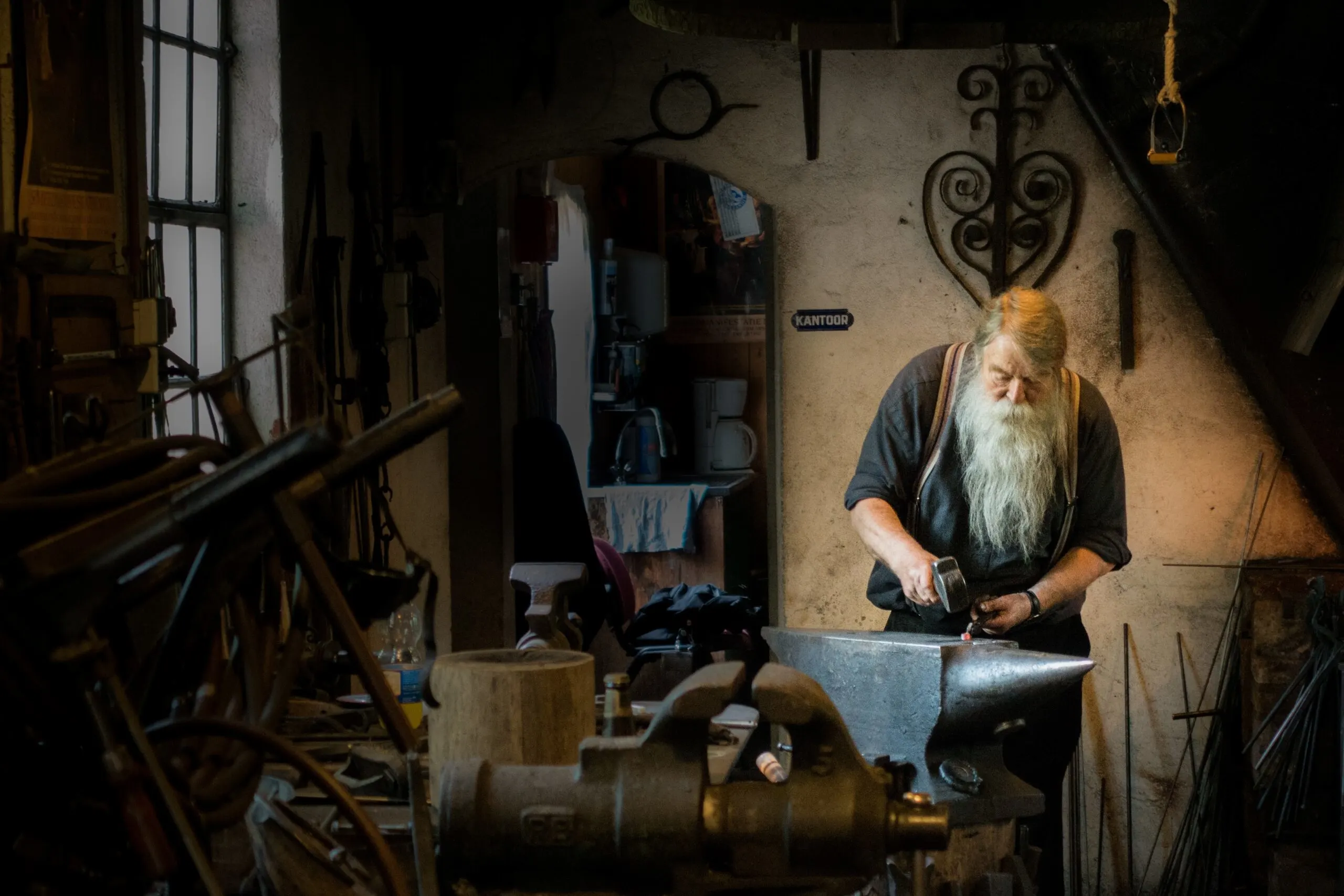Seamus Heaney’s poem “The Forge” is a beautiful exploration of the art of blacksmithing and the transformational power of labour. This poem, part of Heaney’s collection “Death of a Naturalist,” not only vividly portrays the work of a blacksmith but also delves into deeper themes of change, tradition, and the passage of time.

In “The Forge,” he not only captures the physicality and process of the blacksmith’s work but also reflects on the profound existential themes linked to creation and transformation.
Heaney’s fascination with rural life and traditional professions is evident in much of his poetry. The forge, as depicted in the poem, is a space of transformation: raw iron is moulded into finished forms through fire and force.
On my first read, the poem looks like it’s just about a blacksmith working. But Heaney adds deep symbols into it. For instance, he compares the anvil to an “altar,” hinting that the blacksmith’s job has a spiritual touch. In many places, people thought of blacksmiths as almost magical because they could turn plain metal into tools or even art. I have more details about the poem, but first, let’s get to the poem.
“The Forge” by Seamus Heaney.
All I know is a door into the dark.Outside, old axles and iron hoops rusting;Inside, the hammered anvil’s short-pitched ring,The unpredictable fantail of sparksOr hiss when a new shoe toughens in water.The anvil must be somewhere in the centre,Horned as a unicorn, at one end and square,Set there immoveable: an altarWhere he expends himself in shape and music.Sometimes, leather-aproned, hairs in his nose,He leans out on the jamb, recalls a clatterOf hoofs where traffic is flashing in rows;Then grunts and goes in, with a slam and flickTo beat real iron out, to work the bellows.
What is the poem “The Forge” all about?
Firstly, can we just talk about how great Heaney is at imagery? You can literally hear the hammer when reading this short poem. “The Forge” is a poem about a blacksmith’s workshop. Imagine a dark place with old iron equipment scattered outside. Inside, there’s a big, heavy anvil, which is like a sacred place where the blacksmith works. He uses the anvil to shape and craft things from iron. When he works, sparks fly, and it sounds like music.
Sometimes, while working, the blacksmith leans out and hears the noise of horses and traffic outside. He takes a break, but then he goes back inside to work on the iron.
This poem is not just about a blacksmith’s job; it’s also about how hard work and craftsmanship can transform raw materials into something useful and beautiful. It’s a celebration of the skill and dedication of the blacksmith. Just like this blog, you are reading 😅
Conclusion
Seamus Heaney’s “The Forge” takes us into the world of a blacksmith, showing us the magic of turning rough metal into finely crafted objects. It’s a poem about the power of human labour, tradition, and the beauty that can be found in even the simplest of tasks.
Through vivid imagery and straightforward language, Heaney invites us to appreciate the artistry of the forge and the enduring value of hard work.
Lastly, the poem’s emphasis on sounds—the ring of the anvil, the hiss of the shoe in the water, the clatter of hoofs—makes it almost a sonic experience. Heaney is not just asking readers to envision the scene but to hear, feel, and immerse themselves in the rhythmic cadence of the forge.
Did you enjoy this poem? Read more of Seamus Heaney’s classics here.
